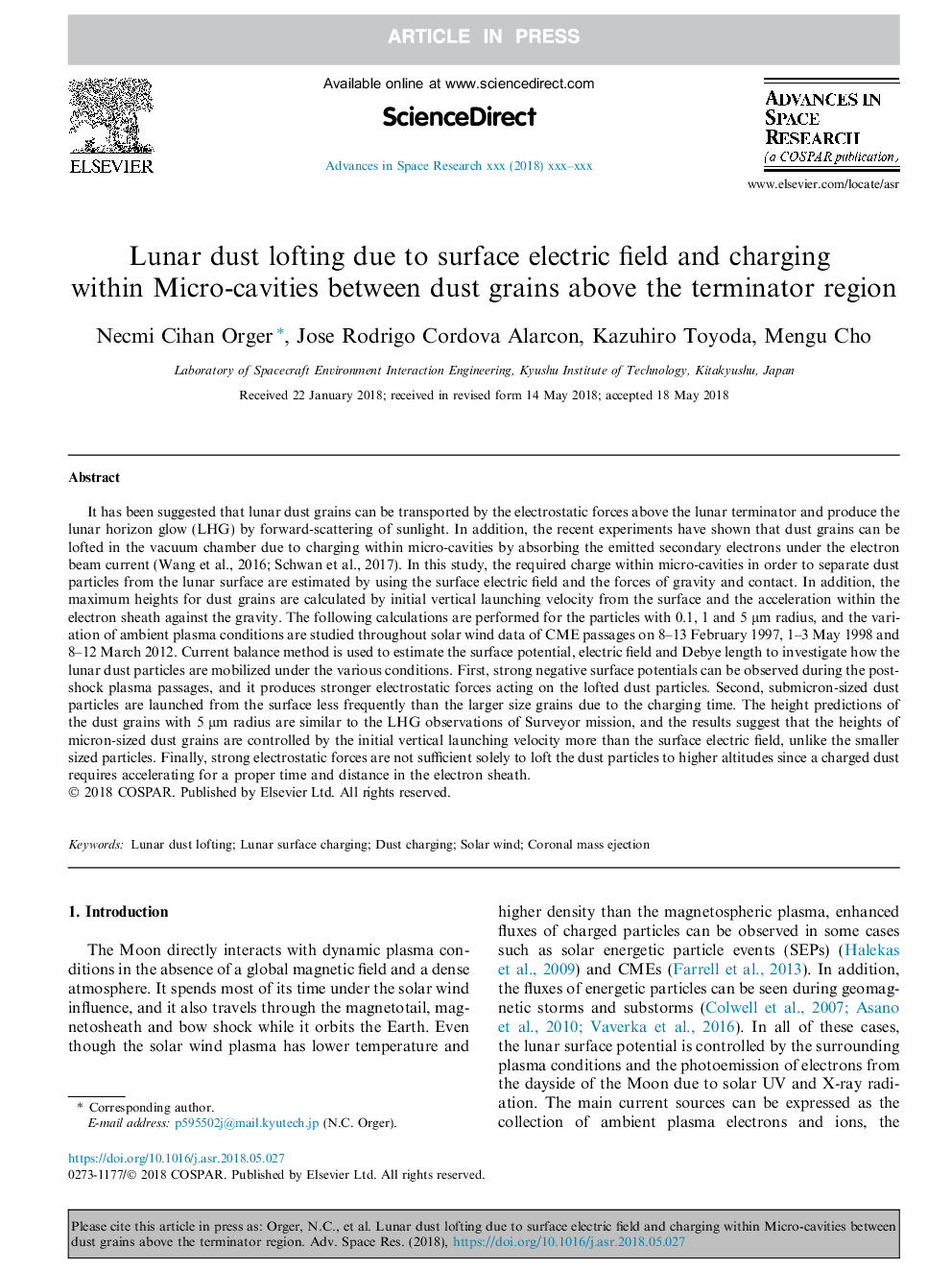| کد مقاله | کد نشریه | سال انتشار | مقاله انگلیسی | نسخه تمام متن |
|---|---|---|---|---|
| 8131694 | 1523263 | 2018 | 16 صفحه PDF | دانلود رایگان |
عنوان انگلیسی مقاله ISI
Lunar dust lofting due to surface electric field and charging within Micro-cavities between dust grains above the terminator region
دانلود مقاله + سفارش ترجمه
دانلود مقاله ISI انگلیسی
رایگان برای ایرانیان
کلمات کلیدی
موضوعات مرتبط
مهندسی و علوم پایه
علوم زمین و سیارات
علوم فضا و نجوم
پیش نمایش صفحه اول مقاله

چکیده انگلیسی
It has been suggested that lunar dust grains can be transported by the electrostatic forces above the lunar terminator and produce the lunar horizon glow (LHG) by forward-scattering of sunlight. In addition, the recent experiments have shown that dust grains can be lofted in the vacuum chamber due to charging within micro-cavities by absorbing the emitted secondary electrons under the electron beam current (Wang et al., 2016; Schwan et al., 2017). In this study, the required charge within micro-cavities in order to separate dust particles from the lunar surface are estimated by using the surface electric field and the forces of gravity and contact. In addition, the maximum heights for dust grains are calculated by initial vertical launching velocity from the surface and the acceleration within the electron sheath against the gravity. The following calculations are performed for the particles with 0.1, 1 and 5 μm radius, and the variation of ambient plasma conditions are studied throughout solar wind data of CME passages on 8-13 February 1997, 1-3 May 1998 and 8-12 March 2012. Current balance method is used to estimate the surface potential, electric field and Debye length to investigate how the lunar dust particles are mobilized under the various conditions. First, strong negative surface potentials can be observed during the post-shock plasma passages, and it produces stronger electrostatic forces acting on the lofted dust particles. Second, submicron-sized dust particles are launched from the surface less frequently than the larger size grains due to the charging time. The height predictions of the dust grains with 5 μm radius are similar to the LHG observations of Surveyor mission, and the results suggest that the heights of micron-sized dust grains are controlled by the initial vertical launching velocity more than the surface electric field, unlike the smaller sized particles. Finally, strong electrostatic forces are not sufficient solely to loft the dust particles to higher altitudes since a charged dust requires accelerating for a proper time and distance in the electron sheath.
ناشر
Database: Elsevier - ScienceDirect (ساینس دایرکت)
Journal: Advances in Space Research - Volume 62, Issue 4, 15 August 2018, Pages 896-911
Journal: Advances in Space Research - Volume 62, Issue 4, 15 August 2018, Pages 896-911
نویسندگان
Necmi Cihan Orger, Jose Rodrigo Cordova Alarcon, Kazuhiro Toyoda, Mengu Cho,